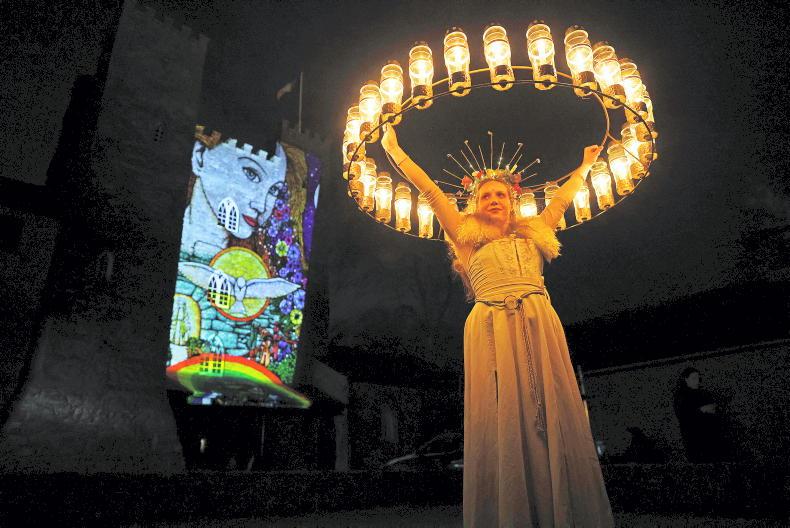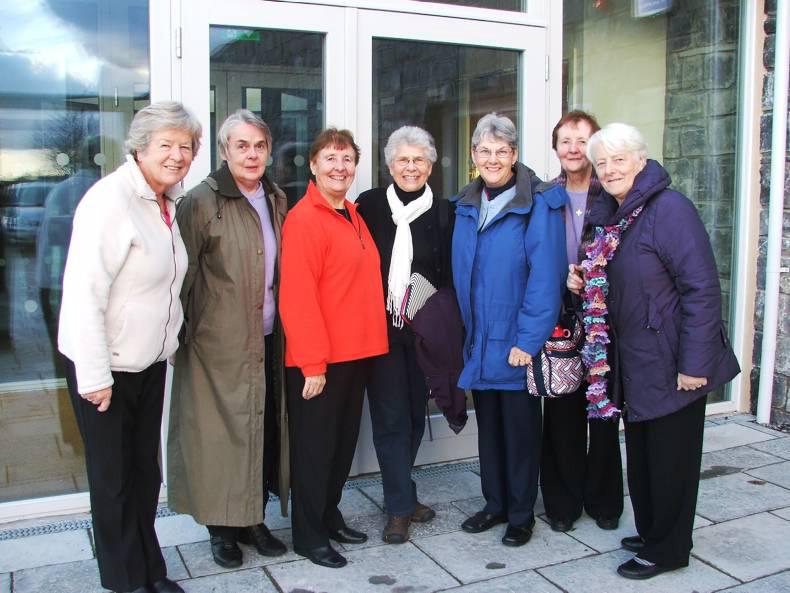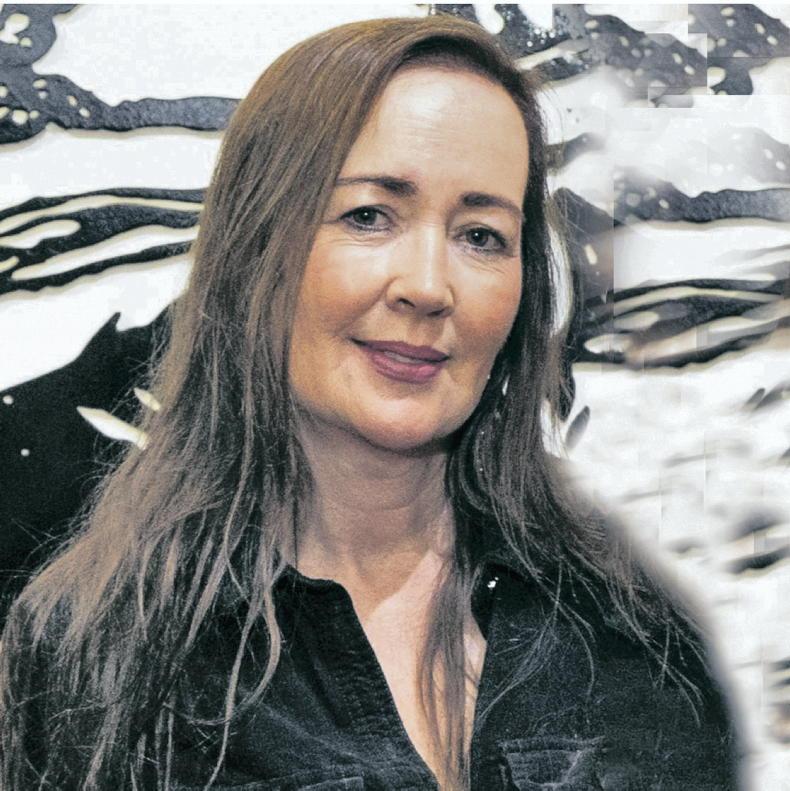Kildare County Council has put together a captivating programme for the Brigid 1500 Festival, and it encompasses a diverse calendar of events taking place across the county.
The festival will run from 27 January to 6 February and it honours and commemorates a life that was extraordinary. Brigid 1500 – A Woman, A Life, A Legacy (brigid1500.ie) will showcase her enduring impact on what will be the 1,500th anniversary of her passing.
On the feast of one of Ireland’s three patron saints, an ecumenical service will be held in St Brigid’s Cathedral, Kildare Town, while later that day a special concert will be staged in three venues, and some of the artists confirmed include Eleanor McEvoy, Moya Brennan of Clannad, and Mary Coughlan.
A particular highlight for me will be the unveiling of a spectacular new work by Lia Laimböck, which is set to gain international acclaim for its beauty. This was commissioned for the 1,500th anniversary celebration of St Brigid, and it does great justice to the trailblazing saint.

Lia Laimböck.

St Brigid's Cathedral, Kildare Town, Co. Kildare.
White light
Most major towns in Kildare will host an event to honour St Brigid. The annual Féile Bríde will begin with a candlelight pilgrimage and ritual at St Brigid’s Well on 31 January, the eve of St Brigid’s Day. The following day residents of Co Kildare, along with people worldwide, are called upon to observe a one-minute silence at 12 noon local time. On both of these dates the Hill of Allen will be bathed in white light, symbolising hope for the new year.
Professor Mary Corcoran is spearheading the committee coordinating many of the celebrations. She says, “We are inspired by who St Brigid was, the strength, compassion, and resilience she had, and the values she upheld. This is not just a celebration of her life, but also a promise to carry forward her legacy of unity, kindness, and empowerment. We want to ensure that her influence continues to shape our community for years to come.”
Even though spring does not officially start until 1 March, the feast day of St Brigid coincides with a time of the year when brighter days are on the horizon. Crosses made from rushes were given her name, while in parts of the country, people carried small dolls called brídeogs from house to house on her feast day as they sought alms.
In 835, the Vikings destroyed her shrine in Kildare, but tradition has it that her remains had already been taken to Co Down, and buried along with Ireland’s other patron saints, Patrick and Colmcille (or Columba). Meanwhile, travelling monks brought her story to Europe, and her feast day was actually celebrated in Germany. Bruges in Belgium is home to a cloth, said to be her mantle, while her head is allegedly in a church near Lisbon.
Many tales of Brigid have been questioned by historians, and may in fact relate to a Celtic goddess of agriculture and poetry. One such tale is that the earlier Brigid hung her cloak, for which the saint became famous, to dry on a sunbeam. Much more likely was that St Brigid took a set of vestments from Conleth, who had brought them from the continent. She showed her charitable side by giving strips of the cloth to the impoverished.
Whatever the truths of our St Brigid, she has been recognised at long last with a national holiday in Ireland. We look forward to celebrating her, still captivating us a millennium and a half after her death.
Read more
The Front Row: The history of Earlsfort Terrace
The Front Row: Warhol exhibition is not to be missed
Kildare County Council has put together a captivating programme for the Brigid 1500 Festival, and it encompasses a diverse calendar of events taking place across the county.
The festival will run from 27 January to 6 February and it honours and commemorates a life that was extraordinary. Brigid 1500 – A Woman, A Life, A Legacy (brigid1500.ie) will showcase her enduring impact on what will be the 1,500th anniversary of her passing.
On the feast of one of Ireland’s three patron saints, an ecumenical service will be held in St Brigid’s Cathedral, Kildare Town, while later that day a special concert will be staged in three venues, and some of the artists confirmed include Eleanor McEvoy, Moya Brennan of Clannad, and Mary Coughlan.
A particular highlight for me will be the unveiling of a spectacular new work by Lia Laimböck, which is set to gain international acclaim for its beauty. This was commissioned for the 1,500th anniversary celebration of St Brigid, and it does great justice to the trailblazing saint.

Lia Laimböck.

St Brigid's Cathedral, Kildare Town, Co. Kildare.
White light
Most major towns in Kildare will host an event to honour St Brigid. The annual Féile Bríde will begin with a candlelight pilgrimage and ritual at St Brigid’s Well on 31 January, the eve of St Brigid’s Day. The following day residents of Co Kildare, along with people worldwide, are called upon to observe a one-minute silence at 12 noon local time. On both of these dates the Hill of Allen will be bathed in white light, symbolising hope for the new year.
Professor Mary Corcoran is spearheading the committee coordinating many of the celebrations. She says, “We are inspired by who St Brigid was, the strength, compassion, and resilience she had, and the values she upheld. This is not just a celebration of her life, but also a promise to carry forward her legacy of unity, kindness, and empowerment. We want to ensure that her influence continues to shape our community for years to come.”
Even though spring does not officially start until 1 March, the feast day of St Brigid coincides with a time of the year when brighter days are on the horizon. Crosses made from rushes were given her name, while in parts of the country, people carried small dolls called brídeogs from house to house on her feast day as they sought alms.
In 835, the Vikings destroyed her shrine in Kildare, but tradition has it that her remains had already been taken to Co Down, and buried along with Ireland’s other patron saints, Patrick and Colmcille (or Columba). Meanwhile, travelling monks brought her story to Europe, and her feast day was actually celebrated in Germany. Bruges in Belgium is home to a cloth, said to be her mantle, while her head is allegedly in a church near Lisbon.
Many tales of Brigid have been questioned by historians, and may in fact relate to a Celtic goddess of agriculture and poetry. One such tale is that the earlier Brigid hung her cloak, for which the saint became famous, to dry on a sunbeam. Much more likely was that St Brigid took a set of vestments from Conleth, who had brought them from the continent. She showed her charitable side by giving strips of the cloth to the impoverished.
Whatever the truths of our St Brigid, she has been recognised at long last with a national holiday in Ireland. We look forward to celebrating her, still captivating us a millennium and a half after her death.
Read more
The Front Row: The history of Earlsfort Terrace
The Front Row: Warhol exhibition is not to be missed











SHARING OPTIONS